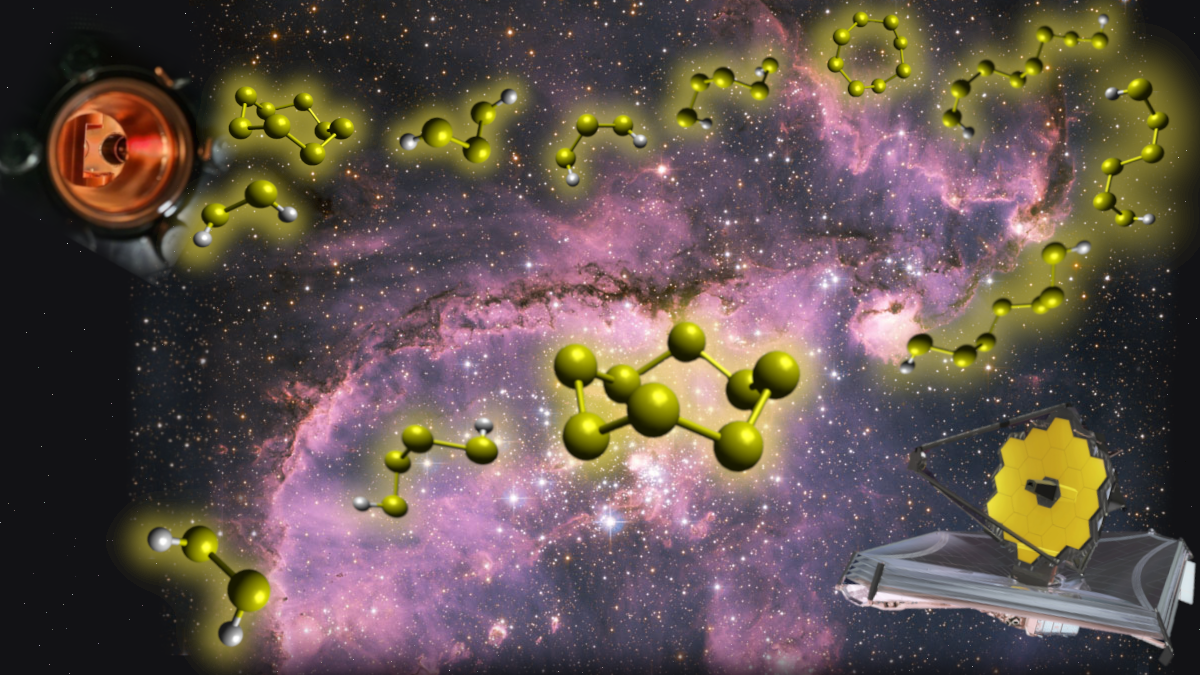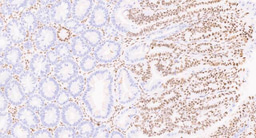Missing Interstellar Sulfur in Inventories of Polysulfanes and Molecular Octasulfur Crowns

Sulfur is the tenth most abundant element of the universe, but the molecular forms it takes in the denser molecular clouds are poorly understood to date. The disparity between the predicted interstellar sulfur abundances and the identified reservoirs of sulfur in cold molecular clouds is known as the sulfur depletion problem, remains an open question for decades.1 Where did this sulfur hide?
Both astronomy and astrochemistry communities theorize that this missing gas-phase sulfur is likely deposited on the surfaces of carbonaceous or silicate interstellar dust particles (simply – interstellar grains), but both observational and experimental evidence are lacking.
Around 40 sulfur-containing molecules have been identified in the interstellar medium (ISM). In the gas phase, detected molecules range from simple triatomics such as hydrogen sulfide (H2S) to thiols (RSH), thioaldehydes (HCSR), thioketenes (RCCS), thioacids (HSOCR), and thioamides (RCSNR’). Recent mid-infrared observations with the James Webb Space Telescope (JWST) provided fundamental compositional insights of the icy grains in dense molecular clouds2 where carbonyl sulfide (OCS) and possibly sulfur dioxide (SO2) have been detected. Although the simplest sulfur containing molecule: hydrogen sulfide (H2S) has not been observed yet in interstellar ices via infrared observations, chemical models predict that hydrogen sulfide is present in these ices.3
Via laboratory simulation experiments conducted in a chamber evacuated to an ultra-high vacuum (a few 10−11 Torr), we reveal two inventories of sulfur bearing molecules synthesized in astrophysically-relevant model ices of hydrogen sulfide exposed to proxies of Galactic Cosmic Rays (GCRs)4 over typical lifetimes of cold molecular clouds from 106 to a few 107 years at temperatures of 5 K: octasulfur (S8) and polysulfanes (H2Sn; n = 2-11).5,6 The transition from the cold molecular cloud to the star forming region is simulated in the temperature programmed desorption (TPD) phase from 5 K to 330 K. The interstellar analog ices are characterized utilizing FTIR spectroscopy during the radiation processing to probe the consumption of the hydrogen sulfide reactants, whereas subliming species are identified in the gas phase by tunable photoionization reflectron time-of-flight mass spectroscopy (PI-ReToF-MS). Soft, single-photon photoionization with isomer selectivity provided with PI-ReToF-MS, coupled with isotopic studies provided unique evidence in identifying the complex reservoir of the sulfur containing molecules synthesized in these processed ices.
The two key sinks of sulfur carrying molecules identified are polysulfanes with up to eleven sulfur atoms (H2Sn; n = 2-11) and octasulfur (S8) exclusively in the crown conformation over molecular cloud lifetimes of 107 years.7 These observations provide fundamental knowledge as to why sulfur may be depleted on interstellar nanoparticles in cold, dense molecular clouds. Such results direct the astronomy community toward the search for polysulfanes in the gas phase of star forming regions, where these molecules should be observable as a result of fractionated sublimation from dust grains. Furthermore, the study affords persuasive evidence on the source of cyclic octasulfur (S8) detected recently in the carbonaceous asteroid (162173) Ryugu,8 thus, documents for the first time the link between interstellar matter and planetary bodies in solar systems including our own.
References:
- Prasad, S. S. & Huntress, W. T., J. Sulfur chemistry in dense interstellar clouds. Astrophys. J. 260, 590 (1982).
- McClure, M. K. et al. An Ice Age JWST inventory of dense molecular cloud ices. Nat. Astron. 7, 431–443 (2023).
- Laas, J. C. & Caselli, P. Modeling sulfur depletion in interstellar clouds. Astron. Astrophys. 624, (2019).
- Kaiser, R. I. Experimental Investigation on the Formation of Carbon-Bearing Molecules in the Interstellar Medium via Neutral−Neutral Reactions. Chem. Rev. 102, 1309–1358 (2002).
- Turner, A. M. & Kaiser, R. I. Exploiting Photoionization Reflectron Time-of-Flight Mass Spectrometry to Explore Molecular Mass Growth Processes to Complex Organic Molecules in Interstellar and Solar System Ice Analogs. Acc. Chem. Res. 53, 2791–2805 (2020).
- Yeghikyan, A. G. Irradiation of dust in molecular clouds. II. Doses produced by cosmic rays. Astrophysics 54, 87–99 (2011).
- Herath, A. et al. Missing interstellar sulfur in inventories of polysulfanes and molecular octasulfur crowns. Nat. Commun. 16, 1–13 (2025).
- Takano, Y. et al. Primordial aqueous alteration recorded in water-soluble organic molecules from the carbonaceous asteroid (162173) Ryugu. Nat. Commun. 15, 5708 (2024).
Follow the Topic
-
Nature Communications

An open access, multidisciplinary journal dedicated to publishing high-quality research in all areas of the biological, health, physical, chemical and Earth sciences.
Related Collections
With Collections, you can get published faster and increase your visibility.
Clinical trials 2025
Publishing Model: Open Access
Deadline: Dec 31, 2025
Women's Health
Publishing Model: Hybrid
Deadline: Ongoing






Please sign in or register for FREE
If you are a registered user on Research Communities by Springer Nature, please sign in